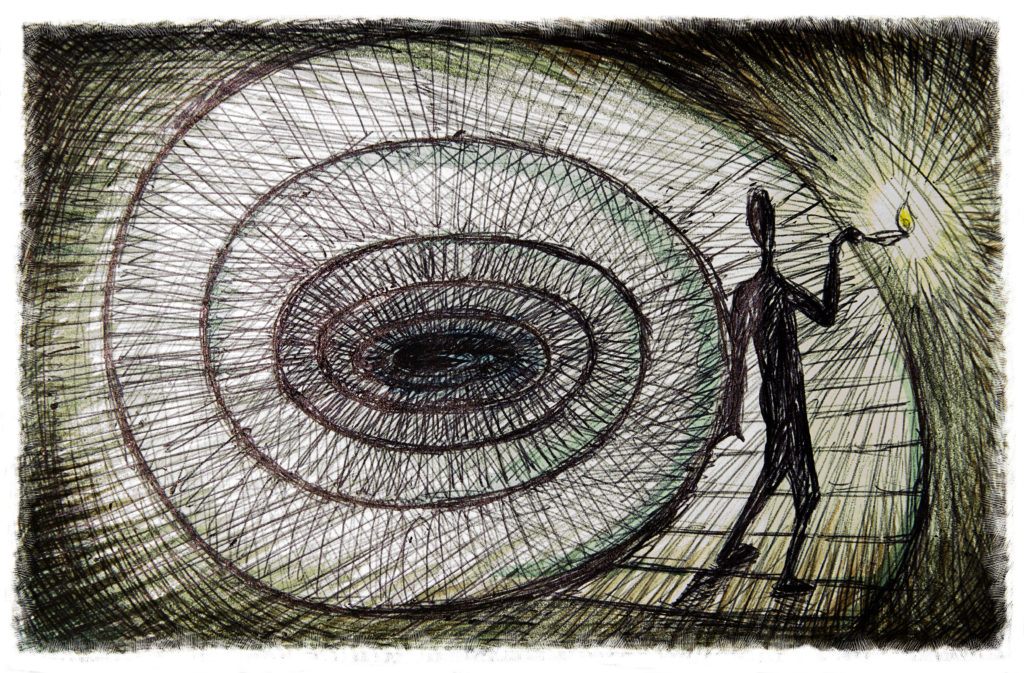
In a recent article in Frontiers in Psychiatry, Wolff and colleagues proposed a cognitive-behavioral model of how psychedelic-assisted psychotherapy (PAP) promotes acceptance.1 To understand the full scope of their work, one must start by understanding experiential avoidance and its import across a wide range of psychopathologies.
Experiential avoidance plays a central role in the onset and maintenance of various psychopathologies. It can be broadly conceptualized as an unwillingness to encounter inner distress—emotions, thoughts, memories and body sensations—coupled with attempts to control or evade the distress in whatever form despite long-term and negative symptomatic outcomes.1,2
Recent work on PAP—a novel treatment for mental illness that involves the therapeutic and supervised use of psychedelic substances in the course of psychotherapy—suggests that one of its key therapeutic mechanisms of action may be lessening experiential avoidance coupled with cultivation of an acceptance toward inner experience.3
Acceptance, in contrast to experiential avoidance, is an adaptive attitude towards inner experience, however distressing that inner experience may be.1,2 It involves allowing emotions, thoughts, memories, and body sensations to occur and evolve without attempting to control or escape them.1,2 Many contemporary cognitive-behavioral psychotherapies, including mindfulness-based therapies, dialectical behavior therapy, and acceptance and commitment therapy, consider the patient’s acquisition of acceptance as pivotal in promoting lasting behavior change.1,2 Whether the acquisition of acceptance also underlies the efficacy of PAP has been a topic of research as of late.
What the Research Says: PAP, Experiential Avoidance and Acceptance
In 2017, Watts and colleagues explored whether the promotion of acceptance and minimization of experiential avoidance underpins therapeutic changes in patients treated with PAP.3 At a 6 month follow-up they conducted a qualitative thematic analysis of semi-structured interviews. Watts and colleagues discovered that in addition to a movement from disconnection to connection, patients also transitioned from an avoiding attitude toward inner experience to an accepting one.
More specifically, the researchers found that in patients who were experiencing inner distress, an avoiding attitude coupled with attempts to evade and exert control over the distress did not bring relief. Rather, the patients reported that when adopting an attitude of acceptance toward the distressing inner experience, the experience changed qualitatively toward one of a more positive nature. This ended up yielding therapeutic insights and emotional breakthroughs. In short, the researchers found that a patient’s attitudes toward inner experience qualitatively changed the experience itself.
At the conclusion of Watts and colleagues’ work, the question remained, just how does PAP facilitate a change from experiential avoidance to acceptance? To answer this question, Wolff and colleagues recently conducted a thorough exploration of Watt and colleagues’ qualitative findings through the lens of the cognitive-behavioral theory in order to formulate a model of how PAP promotes acceptance.3
PAP through the Cognitive Behavioral Lens
Wolff and colleagues’ primary research question was as follows: How does PAP help patients adopt an accepting rather than avoiding stance toward inner distress? To answer this they explored the qualitative patient reports synthesized within a framework of cognitive-behavioral theory and the theory of belief relaxation.4 Wolff and colleagues proposed that PAP may facilitate the change from avoidance to acceptance through three primary mechanisms which operate synergistically: 1) Operant conditioning of acceptance; 2) Elicitation and excitation of private events, and 3) Relaxation of avoidance related beliefs.1
Operant Conditioning of Acceptance
As a typical feature of numerous psychopathologies, avoidance is perpetuated by negative reinforcement. For example, avoidance of a distressing internal image may be perpetuated because the distress associated with the image is removed when avoidance strategies are employed.1 According to Wolff and colleagues, however, PAP has the unique quality of promoting acceptance rather than avoidance of distressing private inner experiences, which then become conditioned through the very same mechanism of negative reinforcement.
For example, in PAP, patients often report a curious phenomenon of being drawn to encounter rather than avoid a distressing inner experience, be it a thought, emotion, an image, or bodily sensation. Being drawn to the encounter changes the quality of the private event to a more positive valence, e.g. a patient moves towards rather than away from a distressing inner image. The change in quality then elicits a positive emotional response, and acceptance rather than avoidance becomes negatively reinforced.1
Elicitation and Excitation of Private Events
In addition to operant conditioning of acceptance, Wolff and colleagues also proposed that elicitation and excitation of private events facilitate change. The mechanism does this by calling forth the very inner experiences that a person typically avoids in daily life during the PAP therapy session. These typically warded-off inner experiences then become amenable to alteration not only through operant conditioning of acceptance as mentioned above but also through relaxation of avoidance related beliefs.1
Relaxation of Avoidance Related Beliefs
Facilitated by elicitation and excitation of private events in the context of a PAP session, Wolff and colleagues hypothesized that acceptance becomes conditioned through negative reinforcement. Concurrently, beliefs about avoidance become amenable to change. This ability to change is due to negative expectancies are proven false by new experiences with the context of encountering distressing inner experiences during PAP.
Previously, Carhart-Harris and Friston put forth belief relaxation as central to the efficacy of PAP. There exist stable and often unconscious beliefs which are hidden from awareness during normal states of consciousness, yet made accessible through the psychedelic experience.4 According to Wolff and colleagues, PAP may not only lead to this sort of relaxation of avoidance related beliefs but could, under the right conditions, even promote acceptance beliefs.1
Conclusion
The cognitive-behavioral framework may help researchers further understand the mechanisms of change underlying PAP. Using the cognitive-behavioral model, Wolff and colleagues formulated a model that sheds light on potential mechanisms of change involved in PAP, including the synergistic interaction between operant conditioning of acceptance, elicitation, and excitation of private events and relaxation of avoidance related beliefs.
This proposed model appears to provide a starting point for further research on cognitive-behavioral change mechanisms. The model also calls to the fore a need for the development of specific measurement instruments and techniques to facilitate further understanding of these change mechanisms. Illumination of change mechanism underlying PAP will likely produce greater acceptance of PAP among mainstream researchers and clinicians, especially when underscored by empirical support.

